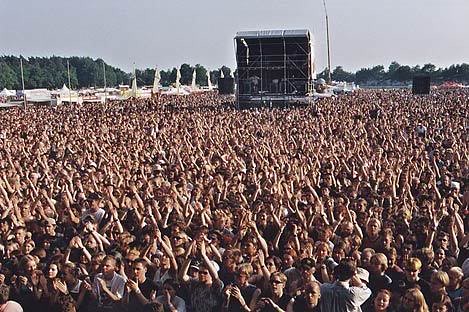How to win at Facebook in three weeks | Econsultancy
Posted 19 July 2010 11:43am by Matt Owen with 9 comments
Hi! I’m your boss! You can tell I’m important because I smoke cigars and seem to know very little about what it is you actually do down in marketing, or wherever it is you work.
However, according to my niece, Facebook is the hip place where all the cool kidz is at, and I’d like a slice of that tasty social pie. Now.
You have three weeks to put together an impressive Facebook presence. Surely no social media manager on Earth could accomplish such a feat?
C’mon, let’s go win at Facebook…
Even if you just go by size, it’s fairly obvious that Facebook is the place to be if you’re running a social media campaign, but with all the competing corporations, brands, celebs and plebs already there, carving out an effective marketing niche can be a challenge for even the most creative marketing team, and the fact that you’re usually working to a tight deadline doesn’t help.
The temptation is to jump right in, start adding friends and broadcasting news, events and shopping lists and quizzes straight away in order to produce instant results.
On no account should you do this.
Instead, spend at least a couple of days researching. Consider the company profile and really think about the target audience. If you want to win you need to create something that stands out and offers real value, and you need to create a solid timetable for engagement:
Week 1: Engage your audience
First things first, we need an audience.
Basically you have three ways to do this, and usually a combo-attack will work best.
- Use offers, giveaways or competitions to drive traffic to your page or group.
- Invest in targeted FB ads to recruit fans.
- Find and manually add existing fans/employees etc to build an initial audience.
All of these have various pros and cons, if you have 500 employees then it’s certainly worth asking them all to join up and there’s still something to be said for manually adding friends, but if you have an audience of millions this might be slightly too ambitious. It’s worth taking time out to add 10-20 friends a day anyway, but there are more effective ways to motivate them.
- Time-driven calls to action.
Again, there are several ways to go about this, from running a fully fledged competition with prizes, questions and deadlines, to a simple ad. If you already have a popular website you should always ask customers to like you on FB, but keep the CTA simple and straightforward. Consider investing in FB ads and introduce a competitive element: “Like us for the chance to win tickets”.
Remember the age old internet adage: If you can’t reach content in three clicks it’s worthless. Your Facebook campaign should be based around this rule as much as possible. If you are running a competition, make sure you take time to review FB’s own promotion rules.
- It’s all about the fans.
Answer personal messages and like some of their content (If you’re a large company this is almost a full time job in itself, so make sure you have adequate staff and resources), get fans to tag photos of themselves using your product and post it to your wall, and reward them regularly for their interaction – highlight a fan of the month and have a prize, or if you deal with other businesses then offer links to their site or blog. Make people feel valued.
- Useful, exclusive content.
Once you have an audience you need to keep them coming back. 2m fans who visit once really aren’t much use. Have a look at those tabs and content boxes and consider what you can add to interest people. Add notes and links to blog content, make sure you utilize the ‘Discussions’ tab to keep people asking questions and returning to the site for answers, offer unique voucher codes with regular updates, anything that will keep people visiting regularly.
- Apps.
Facebook apps are big business and require some serious forethought, but if you can think of a useful, fun way to integrate your content into an app then development needn’t be expensive. Think about your business and how an app would help, do you have multiple locations? How about a location based feature or reward for using different outlets? Provide information? Let people share it easily on the go with their friends. The key factors are the potential for engagement and propagation.
In short: think about the entire experience. Build your Facebook page so that it engages customers at home, on the move and in-store, and rewards them for increased interaction. Provide entertainment or added value and they’ll keep returning and promoting you across their network.
Week 2: Continuous growth and management.
OK, so that’s initial outreach covered, but you need to keep this up!
How are you going to figure out what’s working and focus your efforts to keep audience growth constant?
- Get organised.
A lot of Facebook campaigns fall down because they try too much too soon and add to their initiatives in a piecemeal fashion.
Make sure you have a clearly outlined calendar drawn up so you can track initiatives and avoid too much overlap. There’s no sense in cannibalising content or using it all up in one go. By spreading things out more evenly you’ll also be able to track customer engagement more accurately.
By week two you should also have tracking in place for all your communication: are you anchoring your entire social media presence around Facebook or somewhere else? Whatever your tactics, remember to:
- Make sure you keep track of all conversations and channels with follow-up dates.
Again, consider which resources you need and budget accordingly. If you plan on having a permanent presence you will probably need someone full time to run it for you, make sure that your CFO and HR department are clear on this from the outset.
- Consider long term goals and upcoming marketing campaigns both on and offline.
Make sure there’s space in your timetable for everything. If there isn’t then prioritise in conjunction with your offline team. A big stumbling block for the social media manager is promising too much. Take time to reasonably consider your workload and factor in flexitime for quick turnaround initiatives.
- Answer everyone
Finally, we still have all those pesky customers/enthusiastic fans to deal with. Take at least an hour a day to go through questions and discussions, and make sure you’ve clearly communicated the need for rapid response to all departments. If someone has a question on Facebook and you don’t know the answer, have a list of knowledgeable souls close to hand.
Week 3: Divide and conquer.
In order to keep everything on track for the future, your final task should be the effective distribution of labour.
- Think about whether you’ve included everyone.
By this point you should have a campaign framework in place, so take time to set up an open document calendar and a clear process to avoid competitions competing against one another.
- Schedule everything.
All departments should be able to clearly see what you are doing and when. There’s nothing worse than having twelve similar initiatives arrive at once or creating content bottlenecks.
By taking time to put a dedicated process in place you’ll avoid a lot of common problems.
Consider which departments are likely to need your time, if possible factor in regular weekly news spots, with larger windows for major announcements, competitions and app launches.
- Keep engagement consistent.
Make sure you update at least once a day, even if that involves asking fans how their weekend went, and again the importance of replying quickly cannot be overstressed.
- Set long term metrics measurement in place and divide it into categories.
Check Facebook’s own insight metrics regularly to map increases in conversation numbers and activity, and also keep track of Twitter buzz, forum mentions, and overall traffic numbers. If you aren’t seeing any change in numbers then its time to stop and rethink your initial strategy.
- Don’t let bad habits or mediocre strategic decisions become entrenched.
- Be flexible.
Balance your business needs with those of your customers, and remember it’s ok to give them a breather as well occasionally. Don’t constantly be selling, but make sure there’s at least a background awareness of the brand and continuing buzz. By carefully planning in advance, adding features and initiating ad campaigns at regular intervals, you’ll keep customers returning and maintain steady long-term growth.
In other words, you’ll have everything you need for a long term, successful Facebook presence.
Congratulations, have a cigar.
Learn more...
Econsultancy has a number of reports and best practice guides available to help plan a successful social media campaign, whichever streams and tools you are using. Check out our Social Media and PR Startegy Guidelines and f Social Media Statistics report to get get started.
About this entry
You’re currently reading “
- Published:
- 09:16
- by nathski



0 Comments (Post a Comment)